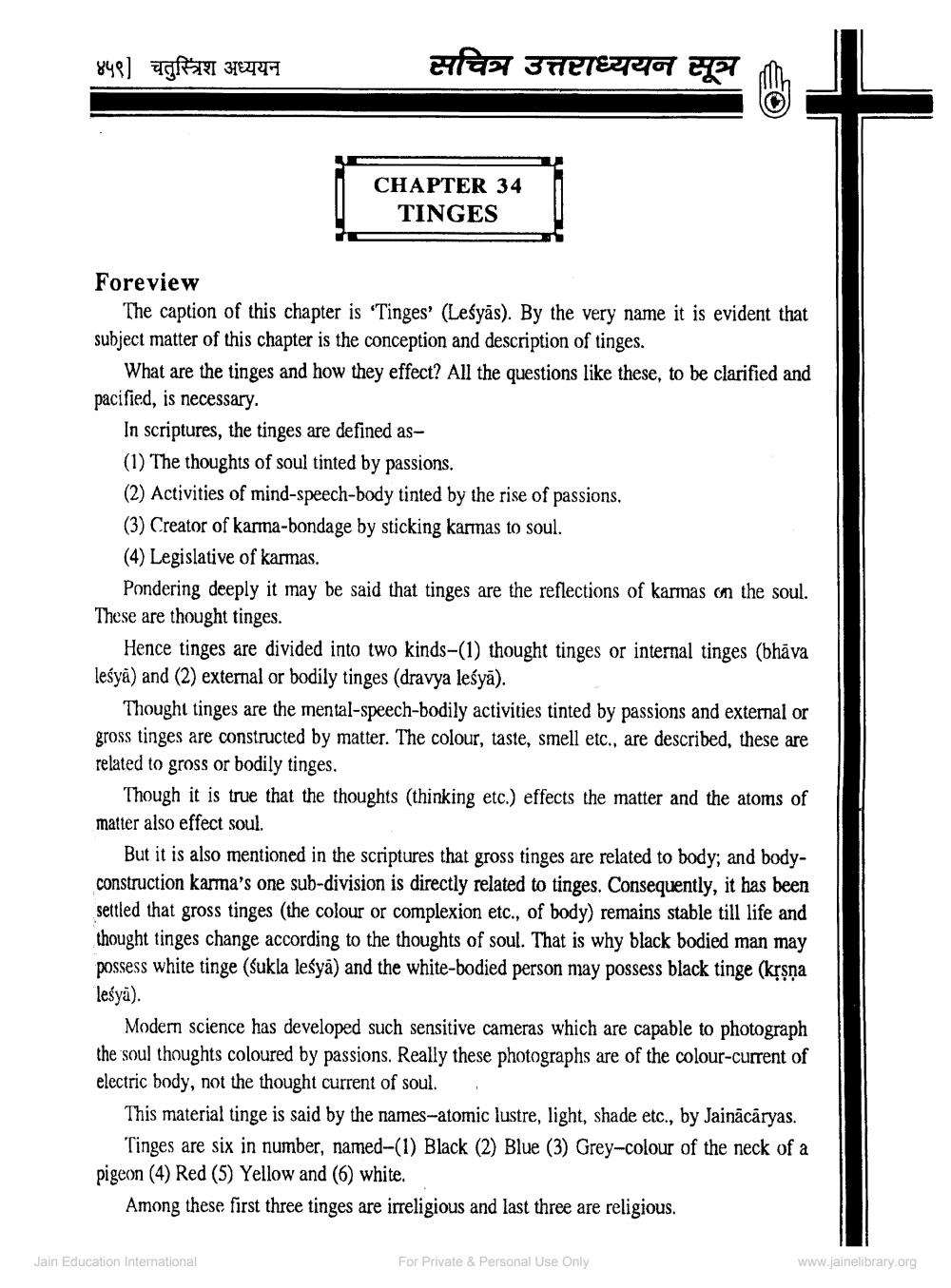________________
४५९] चतुस्त्रिंश अध्ययन
सचित्र उत्तराध्ययन सूत्र in
CHAPTER 34
TINGES
Foreview
The caption of this chapter is 'Tinges' (Leśyās). By the very name it is evident that subject matter of this chapter is the conception and description of tinges.
What are the tinges and how they effect? All the questions like these, to be clarified and pacified, is necessary.
In scriptures, the tinges are defined as(1) The thoughts of soul tinted by passions. (2) Activities of mind-speech-body tinted by the rise of passions. (3) Creator of karma-bondage by sticking karmas to soul. (4) Legislative of karmas.
Pondering deeply it may be said that tinges are the reflections of karmas on the soul. These are thought tinges.
Hence tinges are divided into two kinds-(1) thought tinges or internal tinges (bhāva lesya) and (2) external or bodily tinges (dravya leśyā).
Thought tinges are the mental-speech-bodily activities tinted by passions and external or gross tinges are constructed by matter. The colour, taste, smell etc., are described, these are related to gross or bodily tinges.
Though it is true that the thoughts (thinking etc.) effects the matter and the atoms of matter also effect soul.
But it is also mentioned in the scriptures that gross tinges are related to body; and bodyconstruction karma's one sub-division is directly related to tinges. Consequently, it has been settled that gross tinges (the colour or complexion etc., of body) remains stable till life and thought tinges change according to the thoughts of soul. That is why black bodied man may possess white tinge (sukla leśyā) and the white-bodied person may possess black tinge (krsna leśyā).
Modern science has developed such sensitive cameras which are capable to photograph the soul thoughts coloured by passions. Really these photographs are of the colour-current of electric body, not the thought current of soul.
This material tinge is said by the names-atomic lustre, light, shade etc., by Jainācāryas.
Tinges are six in number, named-(1) Black (2) Blue (3) Grey-colour of the neck of a pigeon (4) Red (5) Yellow and (6) white.
Among these first three tinges are irreligious and last three are religious.
Jain Education International
For Private & Personal Use Only
www.jainelibrary.org




